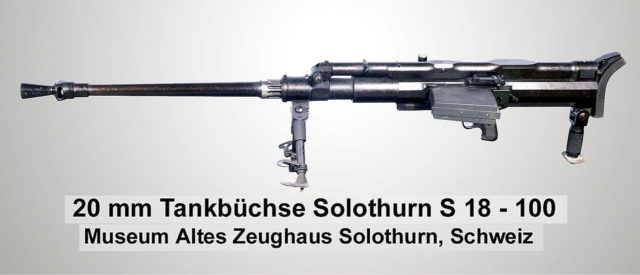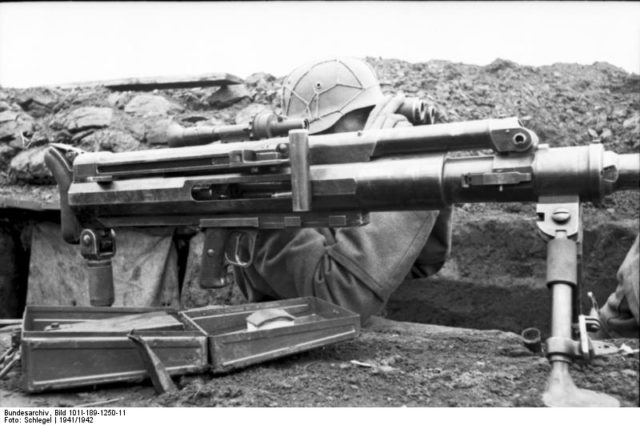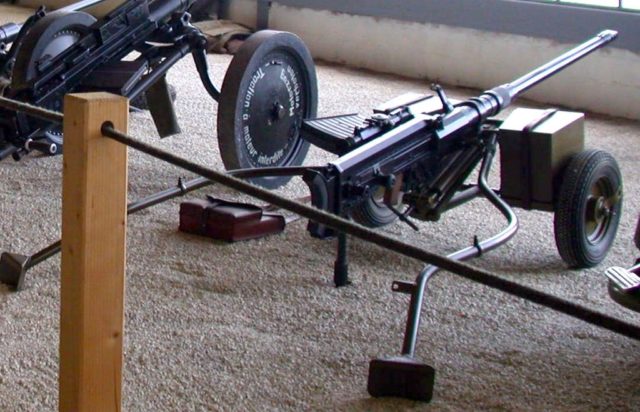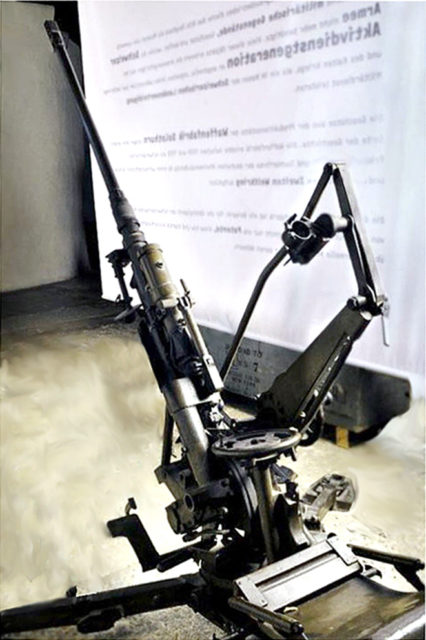The rocket-propelled grenade launcher, a shoulder-fired anti-tank weapon, is in wide use today in conflicts around the world. Before its development, the weaponry used against light tanks of the pre-WWII era was the large-caliber anti-tank rifle. The S-18/1000, produced by Solothurn was Germany’s answer to a similar British design; the Boys Anti-Tank Rifle.
The production company was owned by Rheinmetall, the famous military technology company headquartered in Düsseldorf. Before WWII the Nazis had to bypass the restraints of the Treaty of Versaille, which strictly prohibited the production of such weaponry by Germany. Therefore, the Solothurn S-18/100 and all its variants were initially made in the Rheinmetall compound in Switzerland.

The rifle was semi-automatic and used a bullpup configuration. It’s powerful 20mm round caused tremendous recoil, and its large size made it difficult to transport. The S-18/1000 had a horizontally attached five round or ten round magazine. The 20×105mm belted-case ammunition used by the anti-tank gun was the same as the one used for the S-18/350 aircraft cannon which was derived from the rifle.
At the beginning of the war, it represented a formidable weapon capable of penetrating up to 20mm of armor at a 60-degree angle at a distance of 100-meters. The light tanks of the period could easily be knocked out with such firepower. As tank armor increased, it was deemed obsolete although it was still used throughout the war for fighting armored personnel carriers, trucks and other vehicles and as an anti-aircraft gun.

Before the Soviet occupation, the Estonian army copied the design and manufactured ten of the Solothurn-Arsenal anti-tank rifles.
The Swiss Army bought twelve units and donated them to Finland during the Winter War of 1940. They also collected funds to help the Finnish war effort and purchased much needed anti-tank rifles, but they were delivered too late. However, they were used in the Continuation War which Finland and Nazi Germany fought against the USSR.

Apart from the Finns and the Germans, the Solothurn S-18/1000 was part of the arsenal in the Hungarian, Bulgarian and Italian armies. The Royal Italian Army used the anti-tank rifle extensively in North Africa by mounting it on vehicles. From September 1943, the S-18/1000 was used by the National Republican Army of the Italian Social Republic, the puppet state installed after the Allied invasion of Sicily and southern parts of Italy.

The only non-Axis user of the weapon was the Royal Netherlands Army. The US Army considered purchasing the rifle and ran several tests in 1940-1941.
In the USA the S-18/100 was temporarily standardized as the 20mm automatic gun T3. It was tested against the Colt .90-cal. (23mm) T4 automatic gun, which was a US produced aircraft cannon. The Colt model had more firepower, but the Solothurn was less bulky and complicated, which made it more suitable for military use.
It was planned to buy 50 and then produce a copy. However, negotiations for the purchase were abandoned when the US entered the war against Germany and adopted the British Boys model instead.
